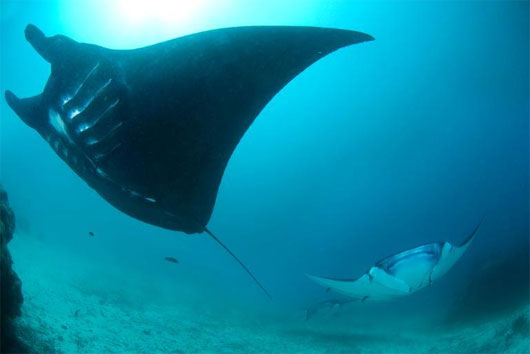Fish can live up to a depth of 8.200m
What is the maximum depth a fish can live? The answer was answered by scientists from the US, UK and New Zealand in the Journal of Proceedings of the National Academy of Sciences (PNAS) recently.
Accordingly, the capture of five snails at depths near record levels off New Zealand has helped scientists have new insights into this issue.

By measuring the concentration of trimethylamine oxide (a molecule that protects proteins from the effects of pressure inside the fish), the scientists concluded that these fish cannot live below the depth of 8,200m. This means that no fish can live at the depth of 1/4 of the ocean.
It is known that due to living in a low light environment, the snail has very little pigment with a transparent appearance. To catch them, mackerel has been used as a trap to attract marine flea-like creatures, which are the food of the snail.
The main author of the study, Paul Yancey from Whitman College in Washington, said there seems to be a natural limit to the amount of trimethylamine oxide a fish may have. This molecule has also been studied on humans, in the treatment of glaucoma. However, snails have a very unpleasant smell when decomposed. That may be because this molecule has a different property, like a characteristic odor. This means that the bigger the fish live, the stronger the stink.
These are the fish caught at the second largest depth ever recorded. Earlier, in 1970, a black mackerel was caught by a water ski at a depth of 8,370m, when a boat passed through the waters of Chile. However, scientists are not sure whether the fish is caught on the ocean floor or when the net is pulled higher.
- Fish at a depth of nearly 400 meters drifted to the US coast
- Fish live at a depth of 7.7 km
- Some fish species live in the harshest place on earth
- Fish live at a depth of nearly 8km under the seabed
- Strange fish can live on land all year without dying
- Filming fishes live in the greatest depth
- Discovering fish is evolving to prepare water to live on shore
- Strange fish live at a depth of 1,500 meters washed up on the Alaska coast
- The special body of fish lives at a depth of 8,178 meters
- Saltwater fish can live in fresh water?
- Transparent glass-like fish live at a depth of 100 meters
- Fishing 'dinosaur fish', fishermen almost jumped out of the boat
 Surprised: Fish that live in the dark ocean still see colors
Surprised: Fish that live in the dark ocean still see colors Japan suddenly caught the creature that caused the earthquake in the legend
Japan suddenly caught the creature that caused the earthquake in the legend A series of gray whale carcasses washed ashore on California's coast
A series of gray whale carcasses washed ashore on California's coast Compare the size of shark species in the world
Compare the size of shark species in the world